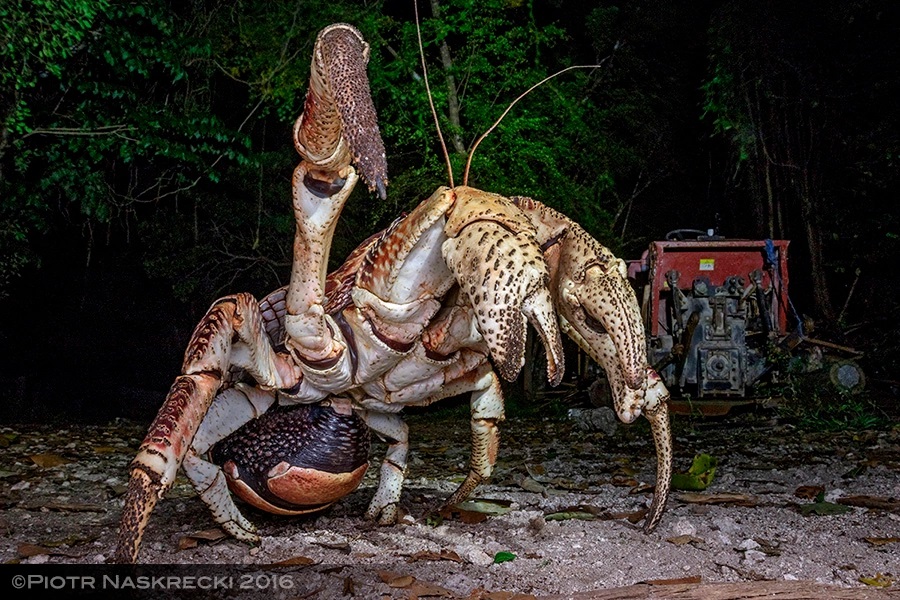Coconut crabs are the world’s largest terrestrial arthropods, a phylum that includes crustaceans, spiders, and insects. The crabs, which live on islands in the Pacific and Indian oceans, can grow to be three feet across and nine pounds in size, according to Wired.
You may be familiar with hermit crabs, the adorable and often tiny crustaceans that totter along the beach toting their bodies in seashells.

And they can easily crack coconuts…hence their name.
Meet their enormous relatives, coconut crabs. Their leg span is up to a metre, they have incredible grip strength and they can lift objects the weight of a 10-year-old child.

Coconut crabs emerge at night on an irregular basis to feed, loot, raid, and plunder. The crab is well-known for its ability to crack or pound open coconuts with its powerful pincers or two large chelae in order to consume the contents.

The soft white meat of the coconut is the primary source of nutrition for the crab. However, it also consumes simple foods such as fruit and leaves, as well as more ‘extreme’ items such as moulted crustacean exoskeletons. This may serve as a calcium source for the growth of the creature’s own shell.

Aside from their own exoskeletons, the crabs have been known to consume chickens, kittens, and other coconut crabs.

It takes some sniffing around to find these delicacies. According to Wired:
The coconut crab uses its extremely developed sense of smell to find food. It, like an insect, uses antennae to detect its prey, but it takes this a step further by devoting significant brainpower to the sense.

Human-Eating Monsters?
Some believe that the coconut crabs’ keen sense of smell led them to a dead or dying Amelia Earhart. According to one theory, Earhart did not perish in the Pacific, but rather crashed landed on Nikumaroro, a remote Pacific atoll.
In 1940, researchers discovered a fragment of a skeleton on the island that matched Amelia Earhart’s description. Now, more intriguing clues are emerging that seem to support the theory that this is where she died. The most compelling theory currently being considered is that coconut crabs surrounded her where she lay.

Researchers conducted an experiment to determine whether the coconut crabs played a role in her death.
They used a small pig carcass in 2007 to assess what the coconut crabs might have done. According to TIGHAR president Patricia Thrasher, the bones were removed quickly and scattered.

This issue, however, is far from settled. According to BBC Future:
The evidence on Nikumaroro could be a strange coincidence and wishful thinking, implying that the castaway’s bones belong to another poor, stranded soul. In this scenario, Earhart simply crashed into the ocean and died on impact, which is probably a better fate than being devoured by giant coconut crabs.






